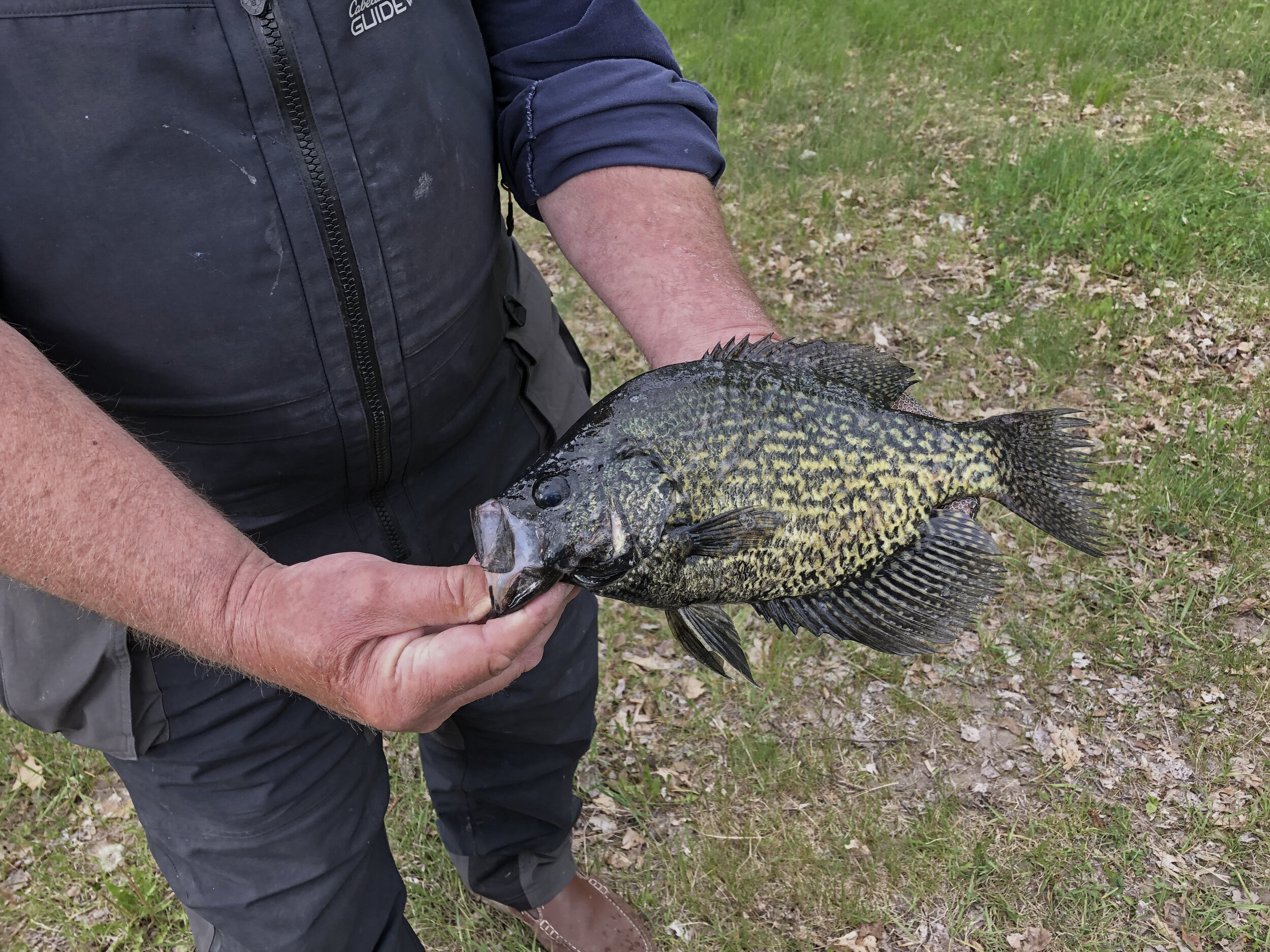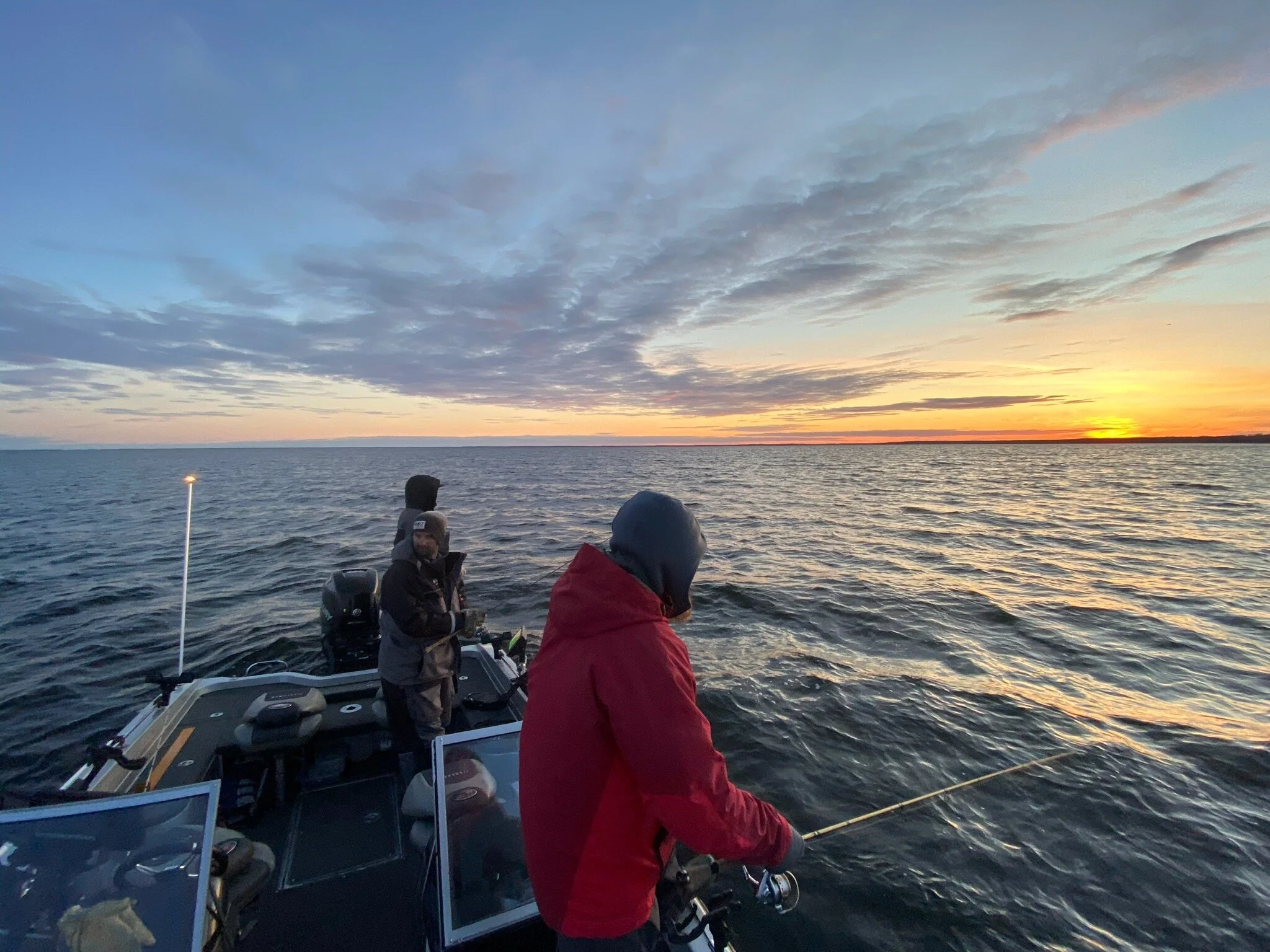Two old fishermen’s saws that almost always turn out to be true are these.
When the Lilacs are in bloom, crappies are in the peak of their spawning season. Whenever there’s a dragonfly hatch, sunfish find their way to the shallows and begin fanning their spawning beds. Those proverbs are obviously true because panfish action has really taken off over these past few days.
As you can see by the photo, this male crappie is wearing his Sunday best, his black spawning outfit. You can see too by the wear and tear on his tail fin that he’s been working hard, fanning the silt out of a depression in the soft, marl bottom.
Female fish do not change color during the spawning season, they retain their normal, silvery color all year long. Knowing this makes it simple for anglers to practice selective harvest. Simply hold on to the darker male fish for your fish fry, and set the females free to finish their business in the shallow water.
Ordinarily, we’d give some advice about locating ideal spawning habitat, but by the time you arrive at Bowen Lodge to check it out, the spawn will probably be over. We believe that because over the weekend, crappies were already being caught in post spawn locations like cabbage weeds, shallow rocks and in the evening, cruising along the edges of shoreline breaks.
If trends follow those of most typical seasons, then locating cabbage weeds is going to be the most reliable location. Cabbage is widespread and can be found in numerous locations in Cutfoot, Tamarack Bay of Winnie, Third River Flowage and Sugar Lake. Key depths are 7 to 10 feet, occasionally a little deeper.
Best presentations for fish found in cabbage weeds include action type jigs. They could be tipped with plastic twirl tails or have safety pin style spinners like a Beetle Spin or a Lindy Spinner. Even trolling traditional live bait spinners like the Little Joe will work, but these should be utilized when the fish are most active along the weedlines.
Exploring for and fishing the cabbage beds for crappie is fun enough, but what makes this really fun is that those weeds are full of surprises. Sneaking along the weed edges, casting a small jig into the pockets could easily lead to an excellent mixed bag catch. Besides crappie, there will be walleye, perch, northern pike and even the odd largemouth bass inhabiting those weed patches.
Anglers who want to specialize in walleye fishing can do it. The main bars on the big lake are loading up with fish headed into “summer locations”. Insect hatches are beginning to emerge and as they become more widespread, walleye populations on mid-lake structures will grow.
Jig and minnow is still the preferred presentation, even on deeper bars. But Lindy Rigging with live bait is effective as well; leeches and night crawlers have been productive for some folks on Winnie. Key depths are 18 to 24 feet, so for jigging, ¼ ounce jigs will do the trick. For Lindy rigging, 3/8 ounce weights are standard; some folks prefer heavier weights ranging from ½ to ¾ ounces. As long as you can easily maintain occasional contact with the bottom, you’ll be in good shape.
By now you’ve heard that folks aren’t catching a lot of keeper walleye and it’s true. Many fish are in the protected 18-23 inch slot size and many more are in the 11 inch range, still too small to be suitable for the creel. But while you’re catching and releasing walleye, you will encounter schools of perch that have reached keeper size. Most folks who want a meal of fish are utilizing perch for that purpose.
Don’t forget about northern pike either, they are active right now too and provide both action and protein. You’re liable to catch plenty of them on your jig and minnow combos while pursuing walleye. But for folks who only want to pursue pike, they can be caught on a wide variety of presentations. Spinnerbaits, plastic swim baits and slip floats with large minnows are 3 of the most reliable.
The week ahead looks promising, warm stable weather should be the backdrop for a fantastic week of fishing. Be sure to look us up if you’re in the area, we’d love to show you around.











